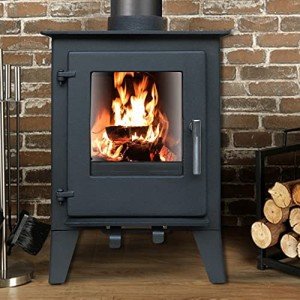Multi-Fuel Stoves: A Comprehensive Guide
Introduction
As the need for effective heating options continues to increase, multi-fuel stoves have actually become a popular option for property owners seeking flexibility in their heating choices. These stoves are created to burn various types of fuel, such as wood, coal, pellets, and gas, making them an appealing and practical option for many families. related resource site delves deep into the advantages, performances, types, and considerations when picking a multi-fuel stove.
Comprehending Multi-Fuel Stoves
Multi-fuel stoves are heating devices that can burn different fuels to produce heat. Unlike conventional wood-burning stoves, which are limited to wood as a fuel source, multi-fuel stoves provide higher versatility in fuel choice. This flexibility enables homeowners to choose the most affordable and readily available fuel for their requirements, hence optimizing their heating experience.
Key Features of Multi-Fuel Stoves
- Fuel Versatility: Capable of burning wood, coal, pellets, and often gas or biofuels.
- Design Variation: Available in a series of designs that can fit numerous interiors and styles.
- Efficiency Ratings: Modern multi-fuel stoves tend to have higher thermal performance scores than traditional wood stoves.
- Lowered Emissions: Many newer models are created to burn fuel more cleanly, making them environmentally friendlier options.
Types of Multi-Fuel Stoves
Multi-fuel stoves can be classified into several types, mostly based on their construction and the fuels they are designed to burn. The following table summarizes these types:
| Type of Multi-Fuel Stove | Fuel Types | Functions |
|---|---|---|
| Log or Wood Burners | Wood, Coal | Need logs or solid fuel; typically have larger combustion chambers. |
| Pellet Stoves | Wood Pellets, Corn | Usage compressed wood or biomass pellets; usually automated feed. |
| Coal Stoves | Coal | Normally designed for burning anthracite or bituminous coal. |
| Gas Stoves | Natural Gas, Propane | Typically include an integrated ignition system; easy to control. |
| Hybrid Stoves | Wood, Pellets, Coal | Versatile style that can adjust to various fuels, often featuring a mix of combustion technologies. |
Pros and Cons of Multi-Fuel Stoves
Benefits
- Versatility: Users can change between fuel sources based on accessibility and expense.
- Economical: Ability to use a cheaper or in your area readily available fuel can significantly lower heating costs.
- Ecological Considerations: Cleaner alternatives when using more recent designs with better emissions technology.
- Heat Output Options: Various fuel types provide different BTU output levels, enabling modification of heat according to particular needs.
Downsides
- Preliminary Investment: Multi-fuel stoves tend to be more pricey at first than basic wood stoves.
- Upkeep Requirements: Different fuels may need varied upkeep and cleansing regimens.
- Learning Curve: Users might need to acquaint themselves with each kind of fuel's residential or commercial properties for optimum usage.
- Area: Adequate storage for various fuel types may be required.
Considerations When Choosing a Multi-Fuel Stove
When choosing a multi-fuel stove, numerous aspects should be thought about to guarantee that the picked design fits the house owner's requirements.
- Space and Size: Measure the location where the stove will be placed. Consider the heating requirements for the room and make sure that the stove is appropriately sized.
- Fuel Availability: Investigate which fuels are most easily accessible in your area and their associated costs.
- Performance Ratings: Look for designs with high-efficiency ratings to minimize fuel costs and emissions.
- Installation Requirements: Assess the setup procedure, including necessary chimneys or flues, and regional building policies.
- Design and Aesthetics: Choose a design that matches the existing decoration while offering effective heating.
Installation and Maintenance Tips
- Professional Installation: Hire a qualified technician to make sure certified setup with security requirements.
- Regular Cleaning: Clean the stove and flue regularly to prevent soot accumulation and keep airflow effectiveness.
- Fuel Quality: Use quality fuels and follow maker standards for best efficiency.
- Evaluation: Have the system checked yearly to guarantee safe and effective operation.
Regularly Asked Questions (FAQs)
1. Can I utilize any type of wood in a multi-fuel stove?
Not all kinds of wood are suitable. It is ideal to utilize skilled tough woods to guarantee effective burning and lessen emissions.
2. Will burning pellets make a substantial difference in heating expenses?
Generally, yes. Pellet stoves can use a more affordable heating service when pellets are more economical than traditional fuels in your area.
3. Do I require an unique chimney for a multi-fuel stove?
Yes, multi-fuel stoves typically need specific chimney setups. Always consult an expert to make sure proper setup.
4. How often should I clean my multi-fuel stove?
Cleaning should be done after each use, with a thorough cleansing carried out at least when a season for efficiency and safety.
5. Are multi-fuel stoves safe for indoor usage?
When installed correctly and kept, multi-fuel stoves are safe for indoor usage. Appropriate ventilation is essential.
Multi-fuel stoves provide a versatile and efficient heating option for contemporary homes. With various fuel options and designs readily available, property owners can discover a model that meets their heating needs while understanding costs and environmental impact. By considering the setup, fuel supply, and upkeep, users can enjoy the convenience and dependability of a multi-fuel stove for lots of years. Those interested in alternative heating alternatives need to seriously assess the benefits offered by these versatile home appliances.

